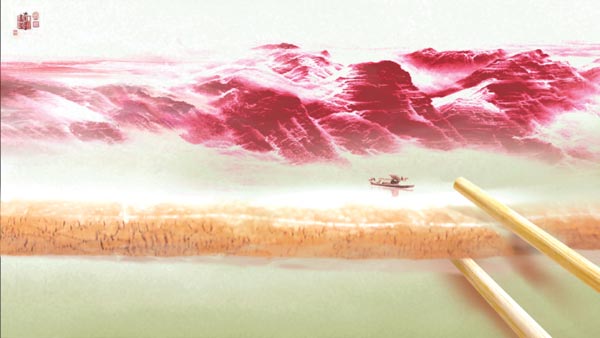Chinese food documentary stirs culinary craze
Updated: 2012-05-30 08:48
(China Daily)
|
||||||||
A seven-episode documentary series on the country's favorite subject has stirred up a crest of culinary interest including millions of blog entries and an increase in sales of regional snacks and traditional foods. Our team of writers spread out to take the pulse of the producers, directors, consultants and viewers of A Bite of China.
|
 |
In the week that it aired on national television from May 14 to 22, A Bite of China caused the ratings to spike like never before. This seven-episode documentary was originally commissioned by China Central Television (CCTV) for its dedicated documentary channel, CCTV 9, and was mooted and produced by the Channel 9's program director, Chen Xiaoqing. When the series debuted on CCTV 1, the station's main channel, there was an increase of 30 percent in viewer ratings, knocking off the drama serials that were normally aired in that prime-time slot. According to Liu Wen, general supervisor of CCTV 9, A Bite of China was an instant hit, chalking up 2 million tweets on Sina Weibo. The ripple effect continued to spread as Web users went online to ferret out the various traditional foods and delicacies mentioned in each episode. China's biggest online shopping portal Taobao.com said the number of searches for food at the site doubled when the program was shown at 10:30 pm. Furry bean curd, black truffles, matsutake mushrooms, organic ham from Yunnan's Nuodeng village and Dali cheese "fans" all became hot items.
Viewers marveled anew at traditional kitchen skills such as the slicing of soft bean curd into hair-like slivers and the making of pulled sugar candy. They were also given a glimpse into the lives of farmers harvesting winter bamboo shoots, digging up lotus roots, rearing mitten crabs and diving for sea cucumbers and abalones.
Most of all, A Bite of China brought the Chinese back to their culinary roots, most of which has been forgotten in the urban rush.
Chen Xiaoqing, the lead director of the series, sums it up: The series has struck a chord close to Chinese hearts because food is not just about eating, it is about traditional habits, and historical heritage.
"Only the Chinese have such a variety of flavors, all reflected in their experiences in life," he says. "For example, they use the phrase 'to taste bitterness' when referring to hardship in life. Jealousy in a relationship is referred to as 'eat vinegar', and when a woman is bold and straightforward, she is described as a 'peppery personality'."
It makes sense that a man known among his friends as an eager gourmet and street food aficionado should propose the idea of a food and travel documentary early in 2011, after the CCTV documentary channel was established.
Chen's colleague, Liu Wen, says a major mission for the CCTV documentary channel is to introduce China to the world.
"We wanted to show an international audience what China is like, what modern China is like," he says.
The production team of 30 started shooting A Bite of China in March 2011, and finished a year later. To make sure the documentary stands up to international standards, it was the first time CCTV made use of high-resolution cameras and a battalion of camera angles and tricks that created an impressive visual impact.
But work started long before the actual filming. The enormous amount of homework meant plenty of research and consultation with food experts, food historians and food consultants, including Hong Kong-based gourmet writer Chua Lam, himself an ex-film maker, and Shanghai-based food critic Shen Hongfei. The two men were the chief consultants for the series.

 Relief reaches isolated village
Relief reaches isolated village
 Rainfall poses new threats to quake-hit region
Rainfall poses new threats to quake-hit region
 Funerals begin for Boston bombing victims
Funerals begin for Boston bombing victims
 Quake takeaway from China's Air Force
Quake takeaway from China's Air Force
 Obama celebrates young inventors at science fair
Obama celebrates young inventors at science fair
 Earth Day marked around the world
Earth Day marked around the world
 Volunteer team helping students find sense of normalcy
Volunteer team helping students find sense of normalcy
 Ethnic groups quick to join rescue efforts
Ethnic groups quick to join rescue efforts
Most Viewed
Editor's Picks

|

|

|

|

|

|
Today's Top News
Health new priority for quake zone
Xi meets US top military officer
Japan's boats driven out of Diaoyu
China mulls online shopping legislation
Bird flu death toll rises to 22
Putin appoints new ambassador to China
Japanese ships blocked from Diaoyu Islands
Inspired by Guan, more Chinese pick up golf
US Weekly

|

|






